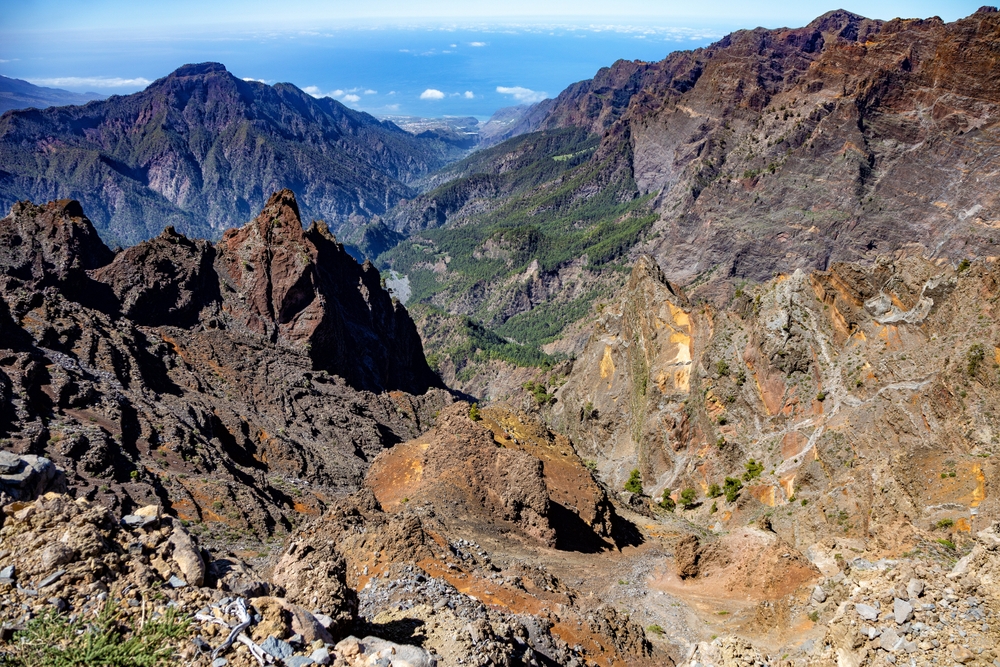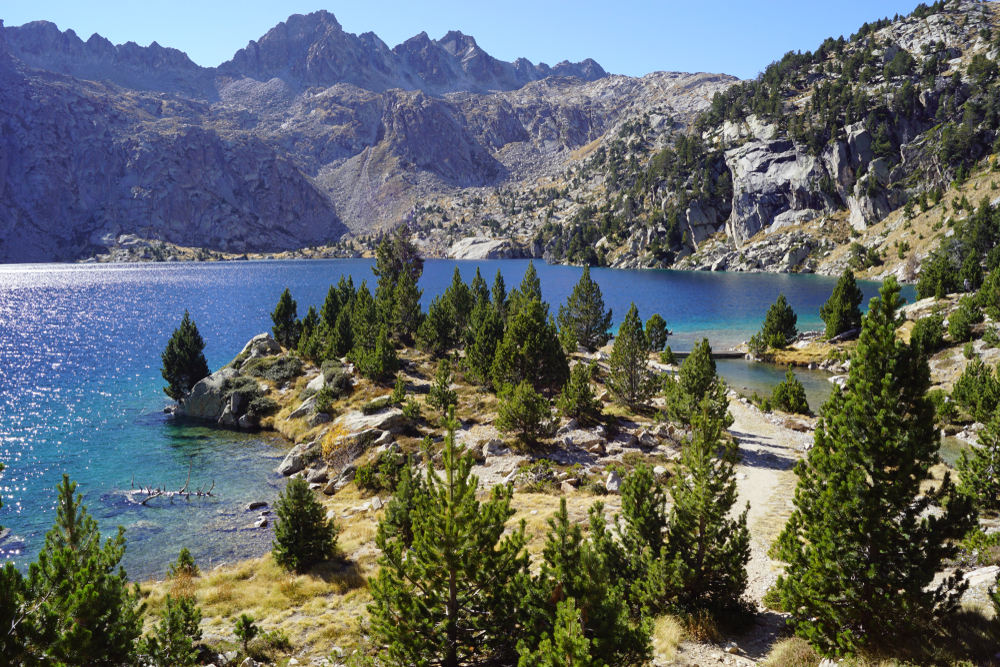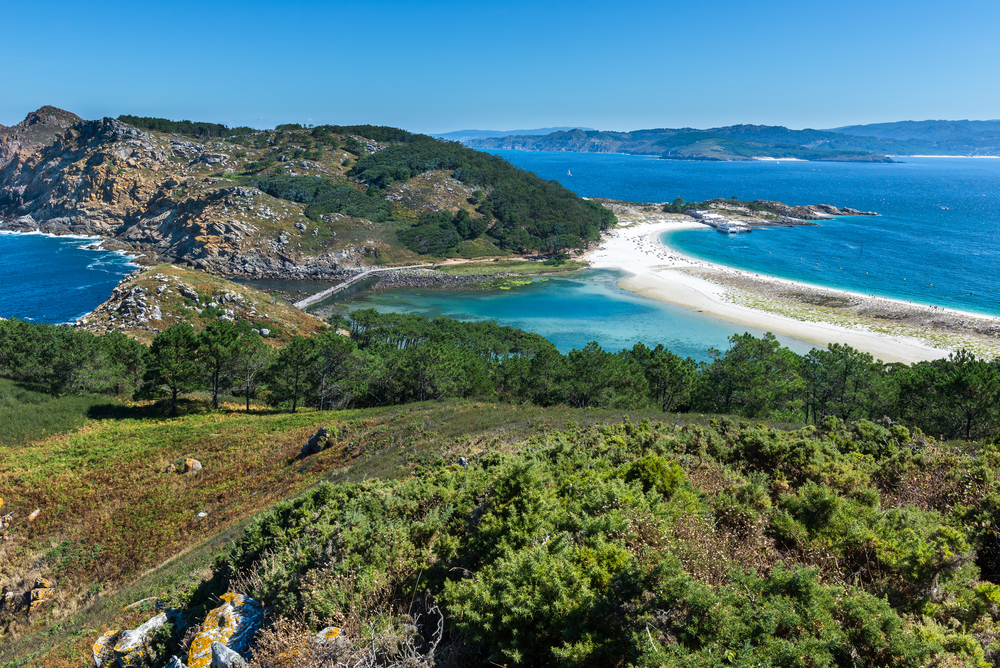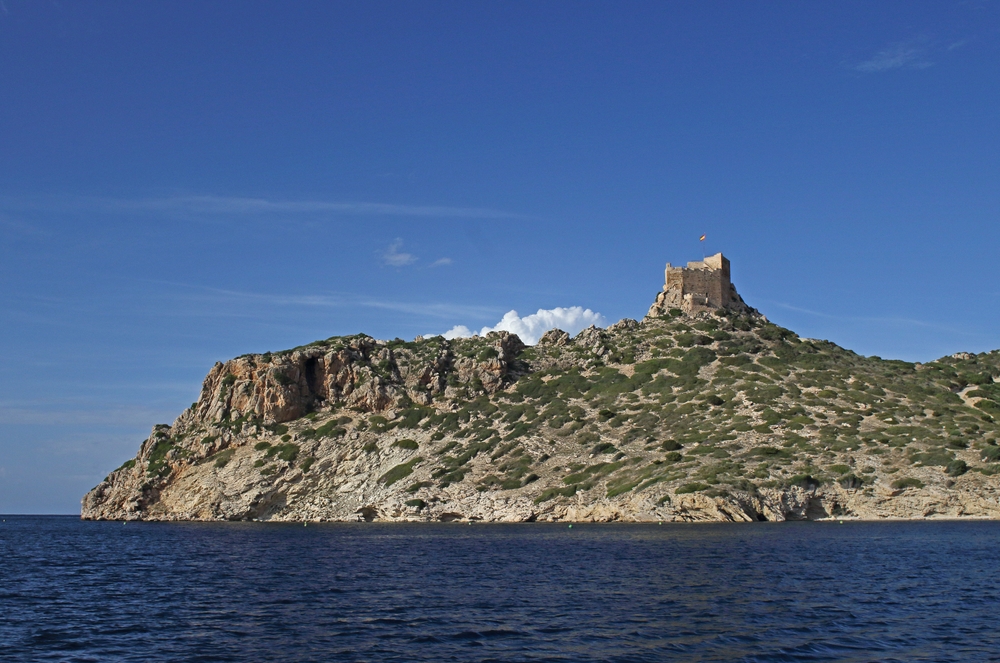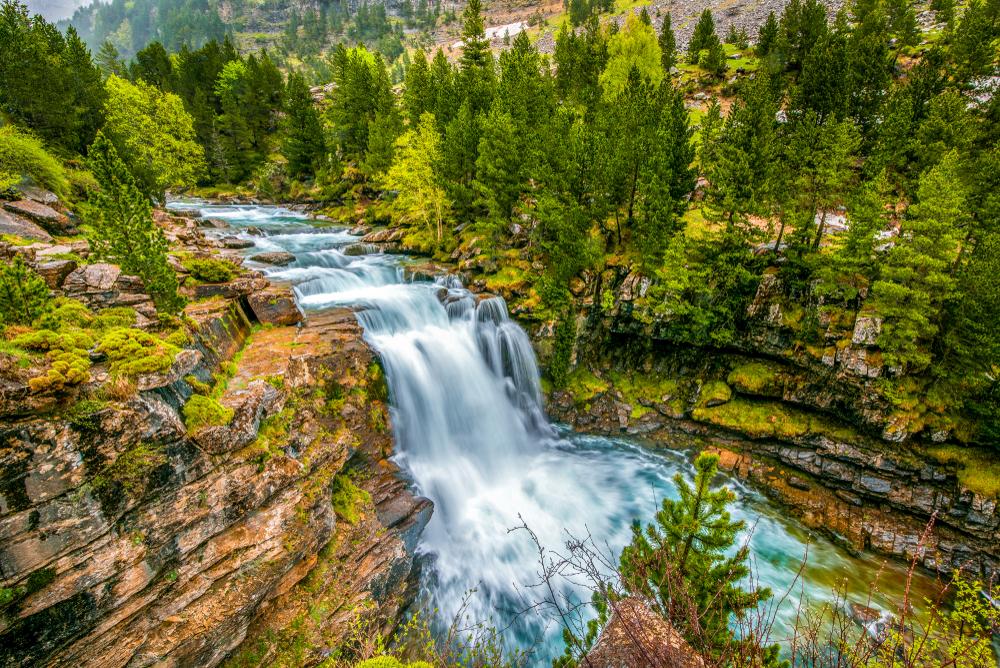Caldera de Taburiente Overview
Caldera de Taburiente National Park, known locally as Parque Nacional de la Caldera de Taburiente, is a breathtaking protected area on the island of La Palma in Spain’s Canary Islands.
Encompassing approximately 18.9 square miles (48.6 square kilometers), the park is named after the massive volcanic crater, or caldera, that defines its landscape. Located in the central part of La Palma, this geological wonder is surrounded by dramatic mountain ridges, deep ravines, and lush forests, making it one of the most striking natural areas in the archipelago.
The caldera itself, formed by erosion and landslides rather than a volcanic explosion, has steep walls that rise up to 2,000 meters (6,562 feet) above the crater floor, creating a dramatic amphitheater of rugged peaks and deep valleys.
The terrain of Caldera de Taburiente is a blend of towering rock formations, lush laurel forests, and dramatic gorges. Roque de los Muchachos, at 2,426 meters (7,959 feet), is the highest peak in the park and offers panoramic views of the island and beyond. The park is also home to the Barranco de las Angustias, a deep gorge that serves as the main entrance for visitors exploring the area.
Water is a key feature of the park, with numerous streams and waterfalls such as Cascada de la Fondada adding to the lushness of the landscape. The combination of volcanic rock, pine forests, and abundant freshwater creates a dynamic ecosystem that supports a variety of plant and animal species.
The wildlife within Caldera de Taburiente National Park is diverse, though it is especially known for its birdlife. Several species of birds of prey, including the kestrel, common buzzard, and the rare La Palma blue chaffinch, can be found soaring over the ridges. The park is also home to reptiles like the Canary Island lizard and various invertebrates, some of which are endemic to the island.
While large mammals are not present, the European rabbit and feral goats are common. The park’s flora is particularly distinctive, featuring extensive Canarian pine forests, hardy shrubs, and a variety of endemic plant species that thrive in the volcanic soil.
One of the park’s most popular attractions is the Roque de los Muchachos Observatory, which sits on the highest peak and is one of the world’s leading astronomical research centers due to the island’s clear night skies. Visitors also flock to the park for its extensive hiking network, with trails such as the Ruta de la Crestería and the descent through Barranco de las Angustias providing breathtaking views.
Camping is permitted in designated areas, allowing adventurous visitors to immerse themselves in the park’s beauty overnight. The presence of numerous freshwater springs and streams makes it an ideal location for those looking to experience nature in its purest form.
Conservation efforts within Caldera de Taburiente have been largely successful, with strict protections in place to preserve its unique ecosystems. Reforestation programs have helped restore native pine forests, while ongoing monitoring ensures that human impact remains minimal.
The primary challenge facing the park is balancing tourism with conservation, as increased visitor numbers pose a risk to fragile habitats. Nevertheless, its designation as a national park since 1954 and its inclusion within the UNESCO La Palma Biosphere Reserve highlight its importance as a protected natural area.








































































